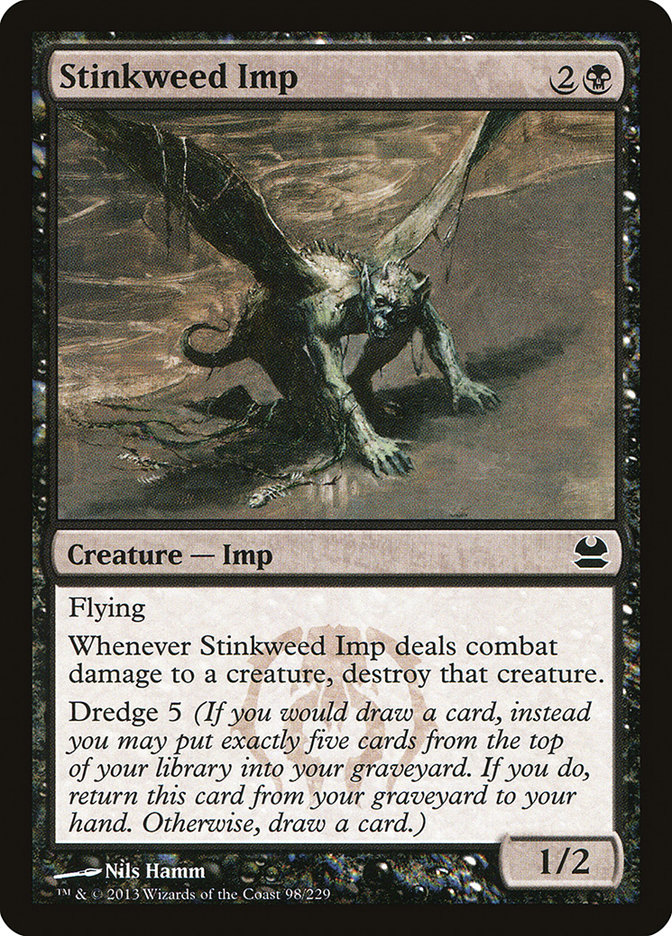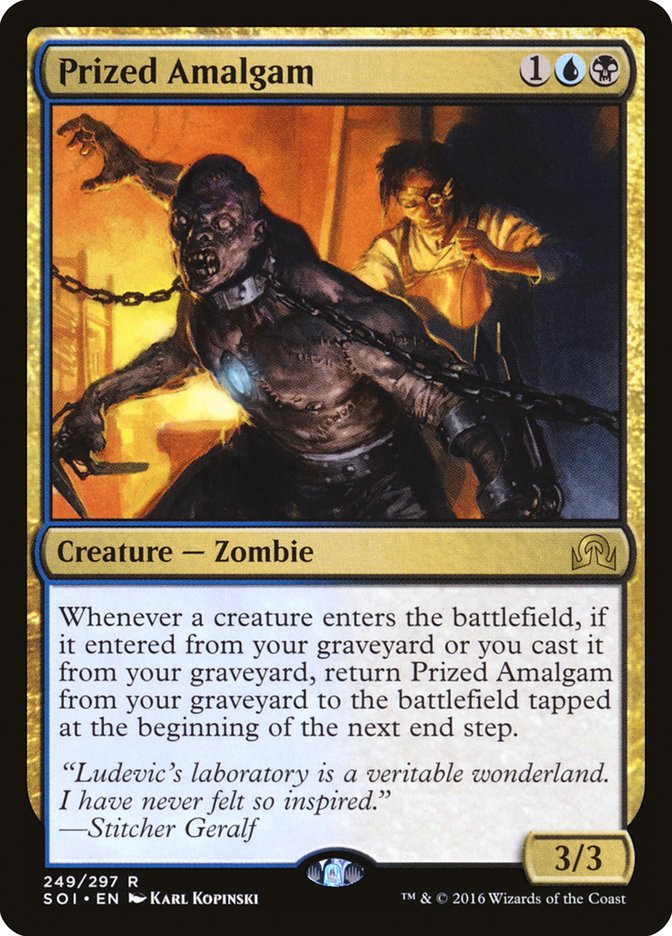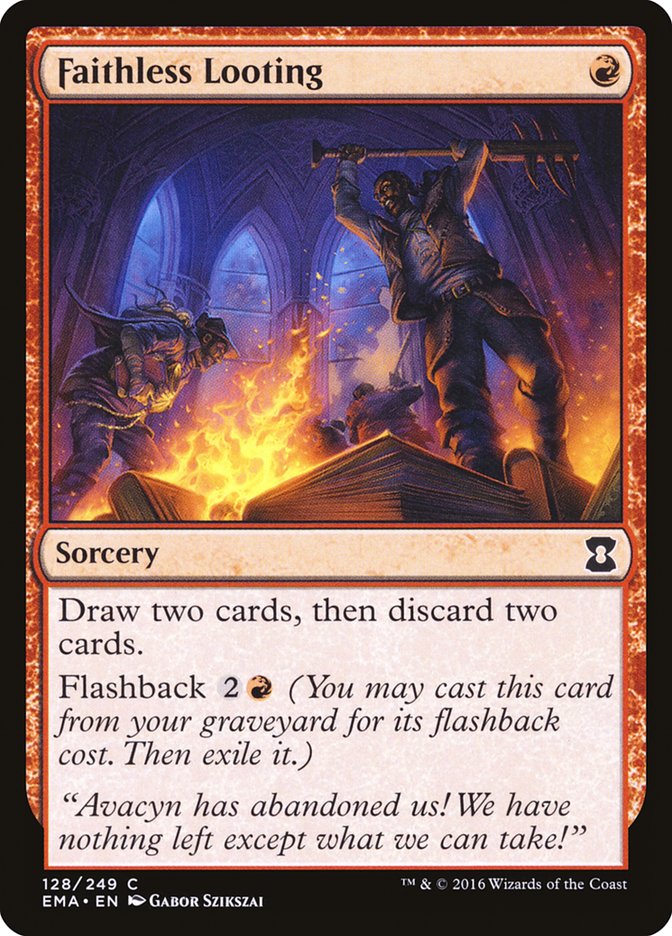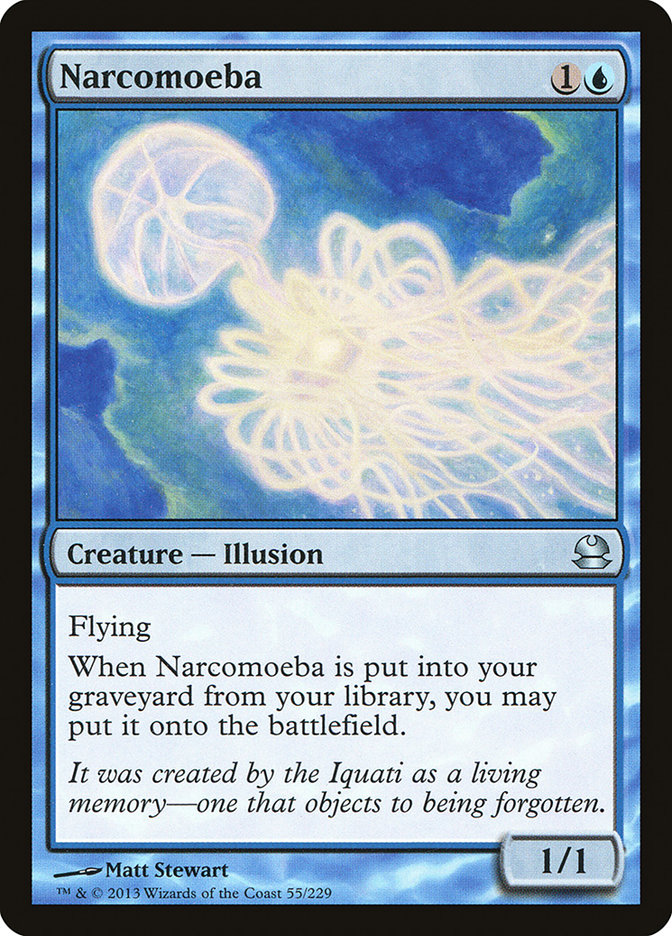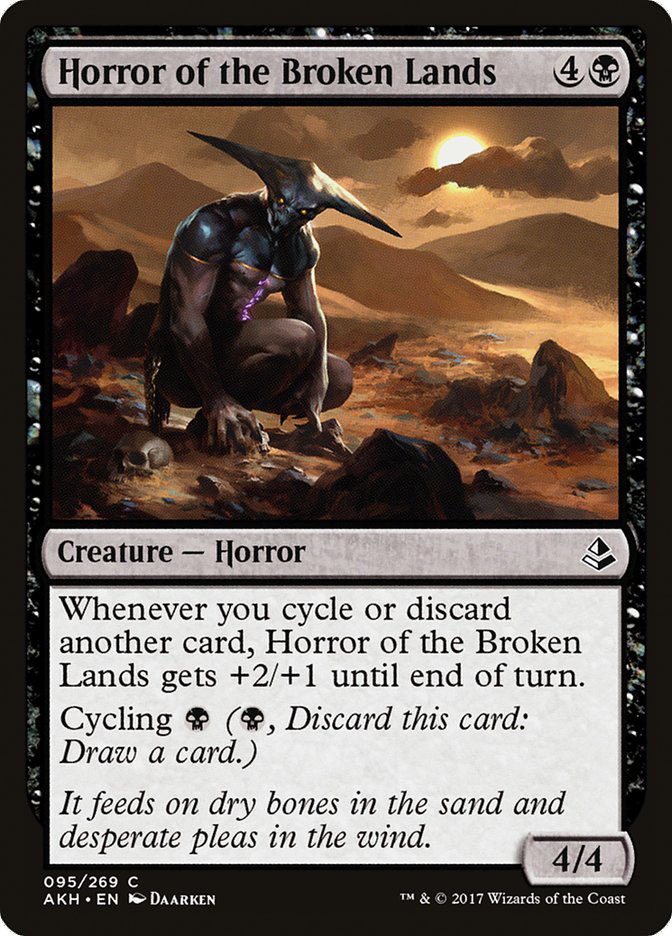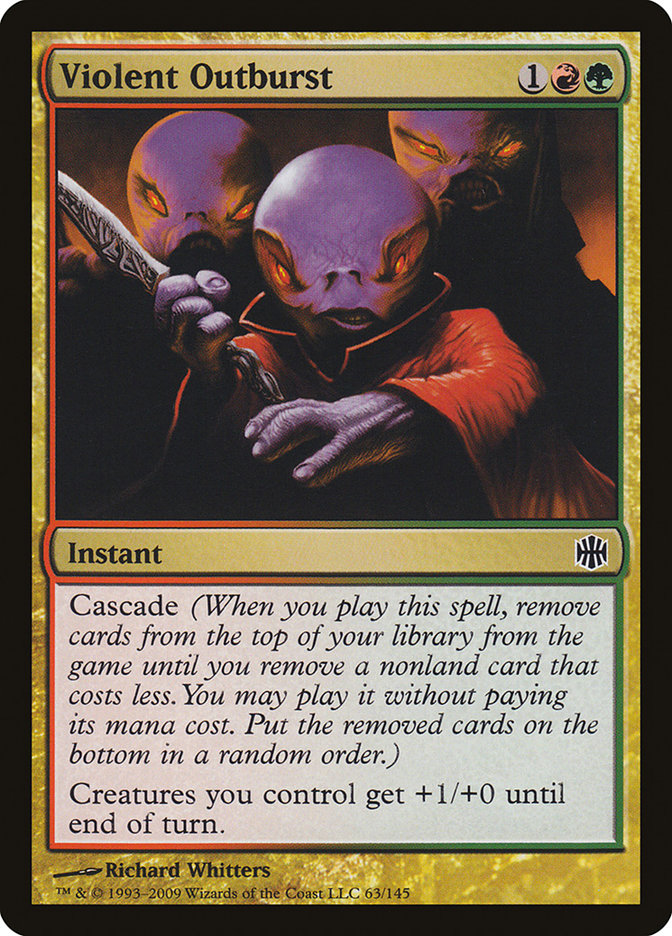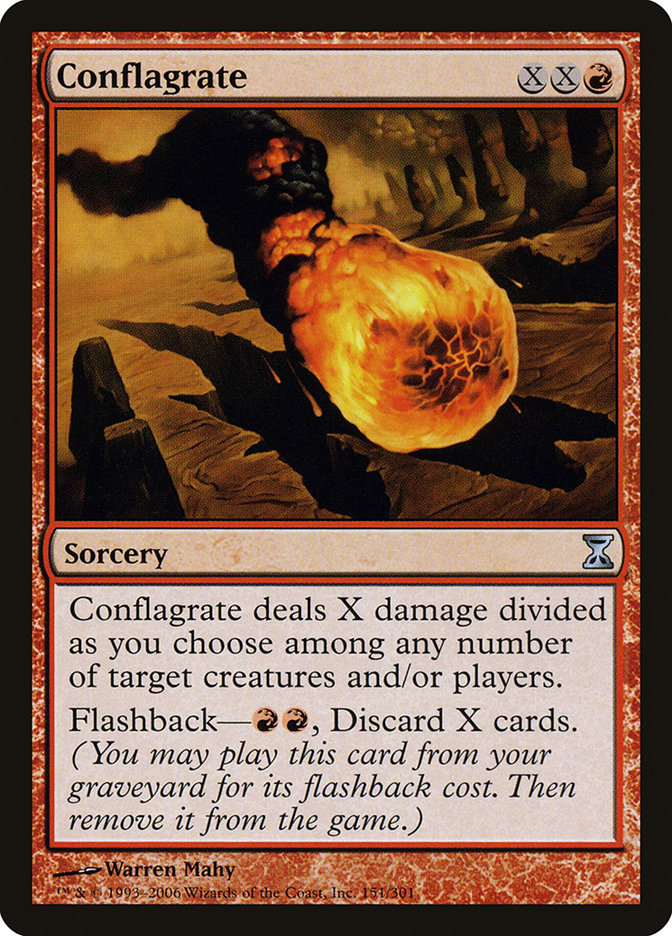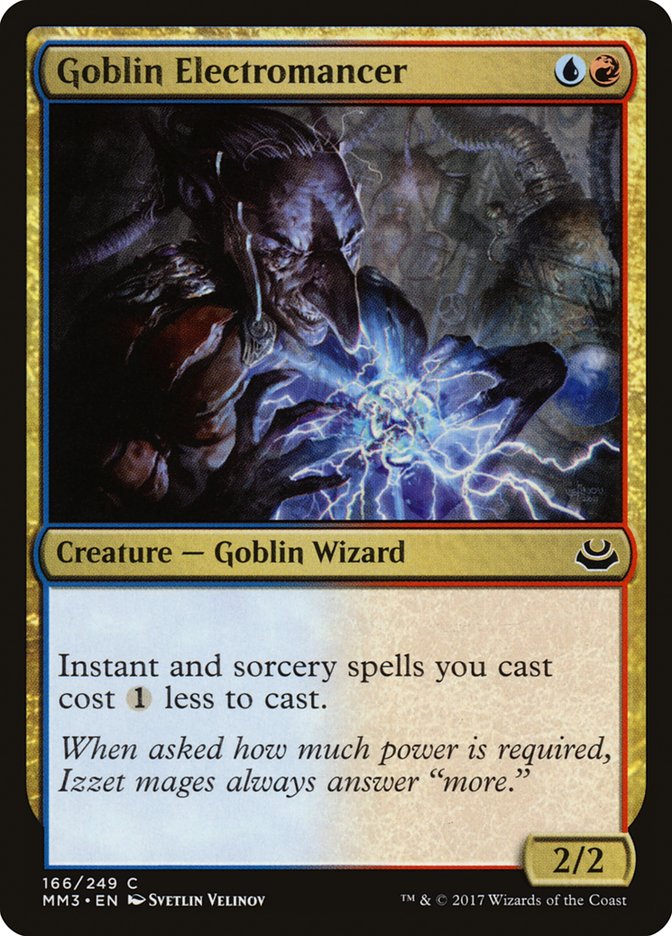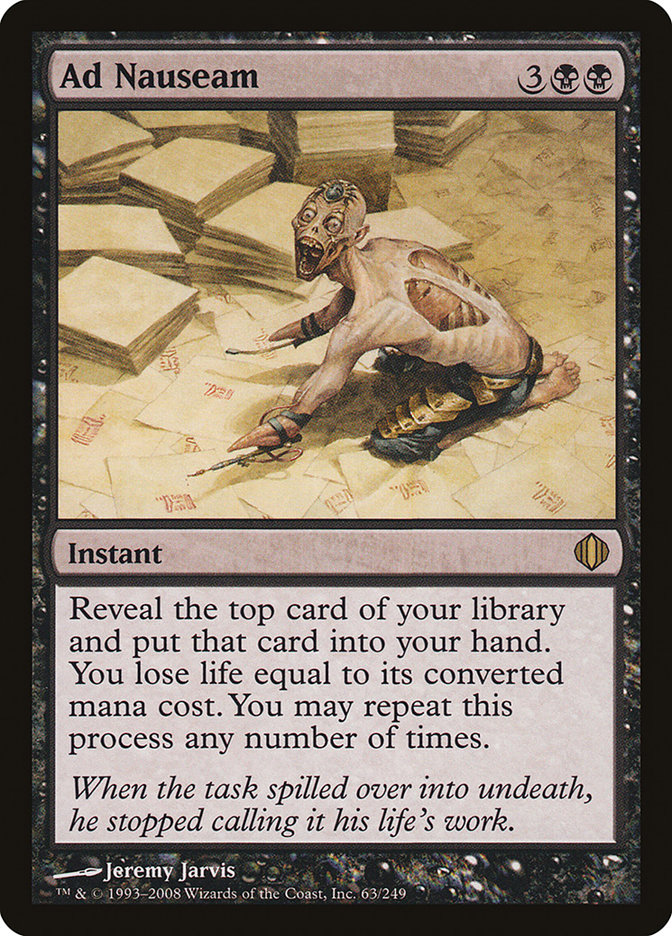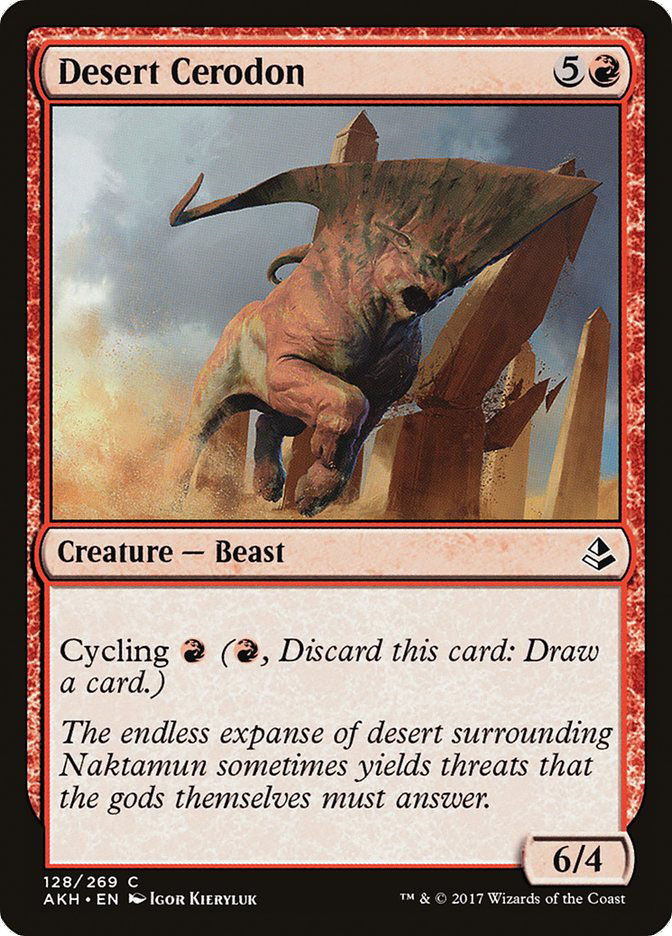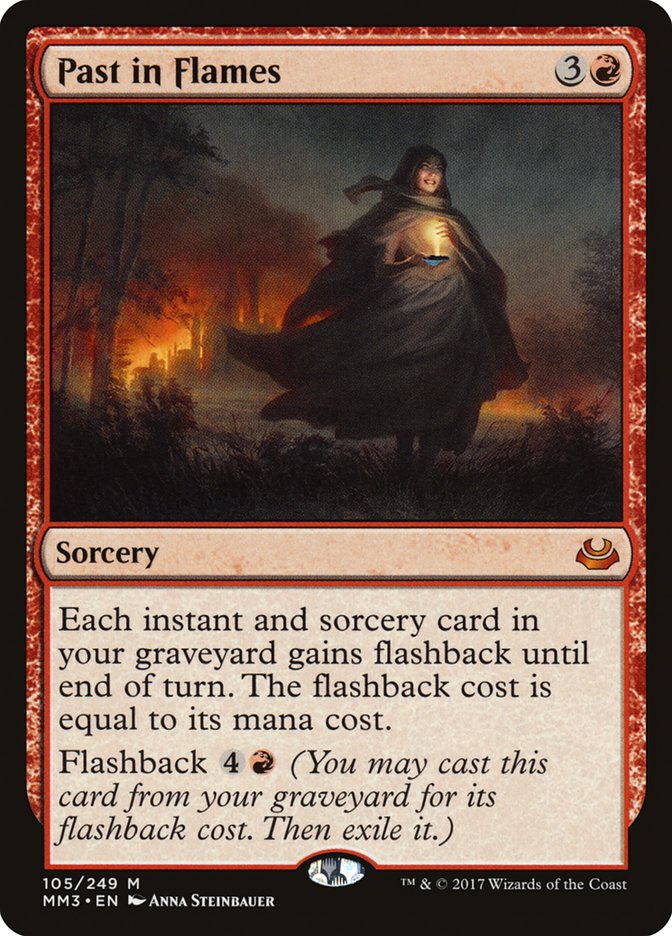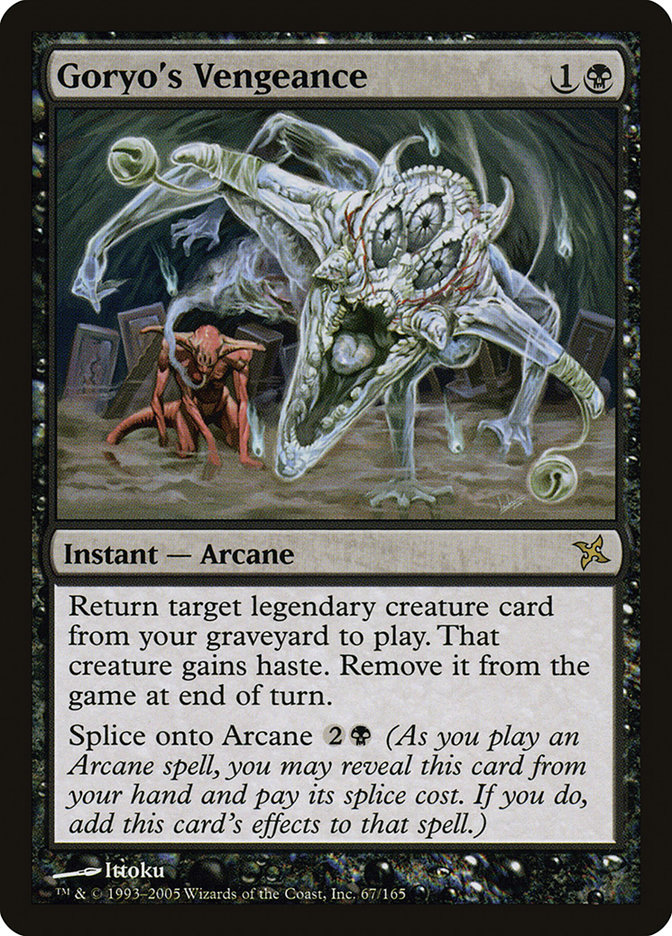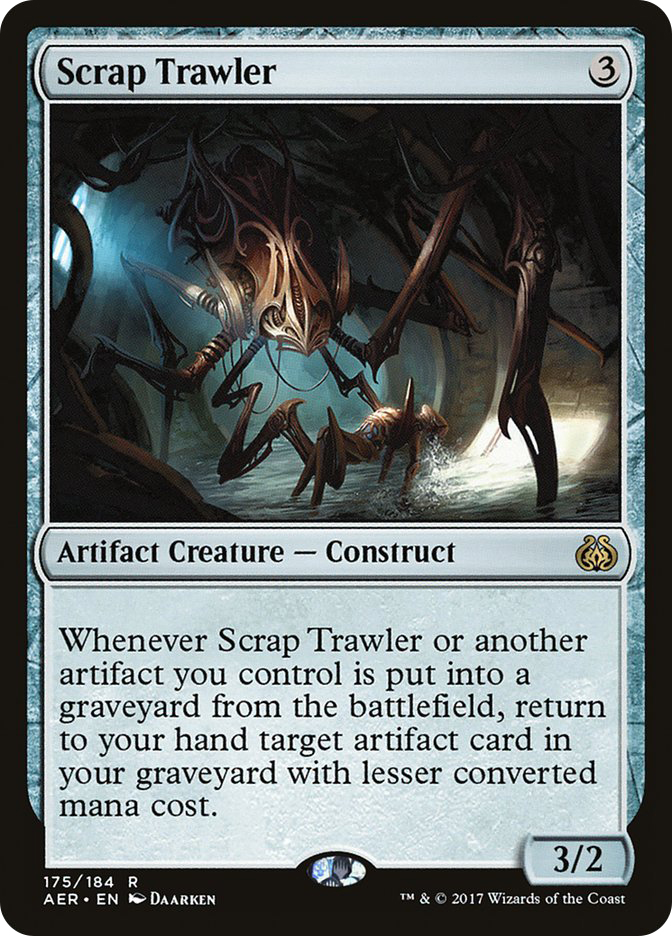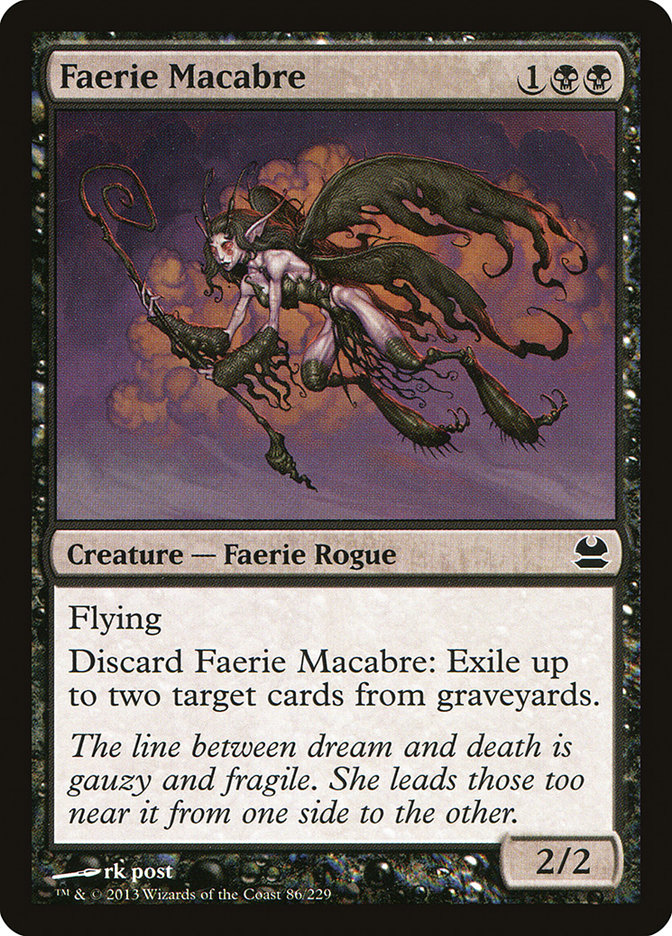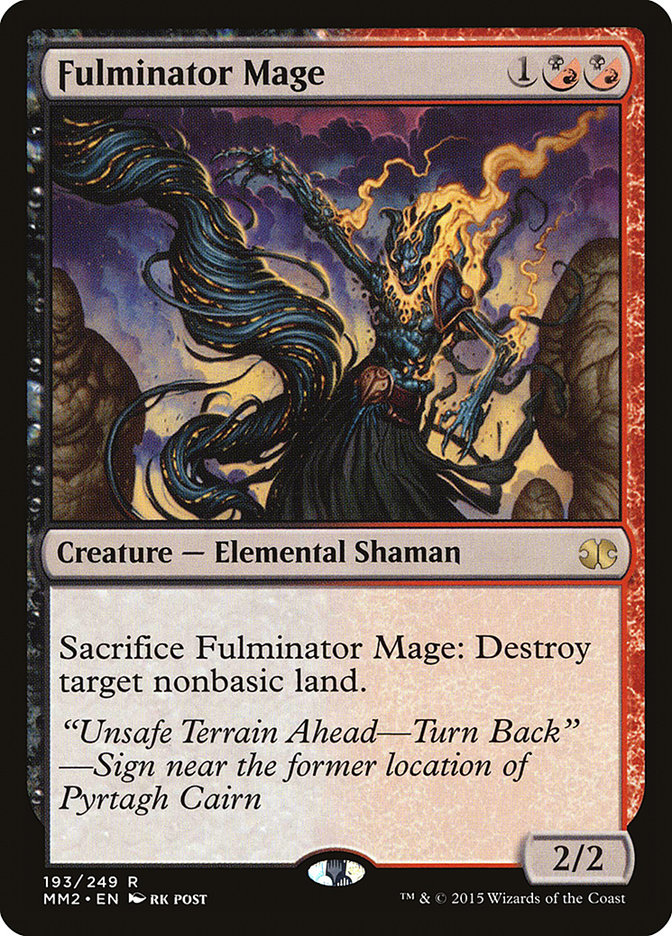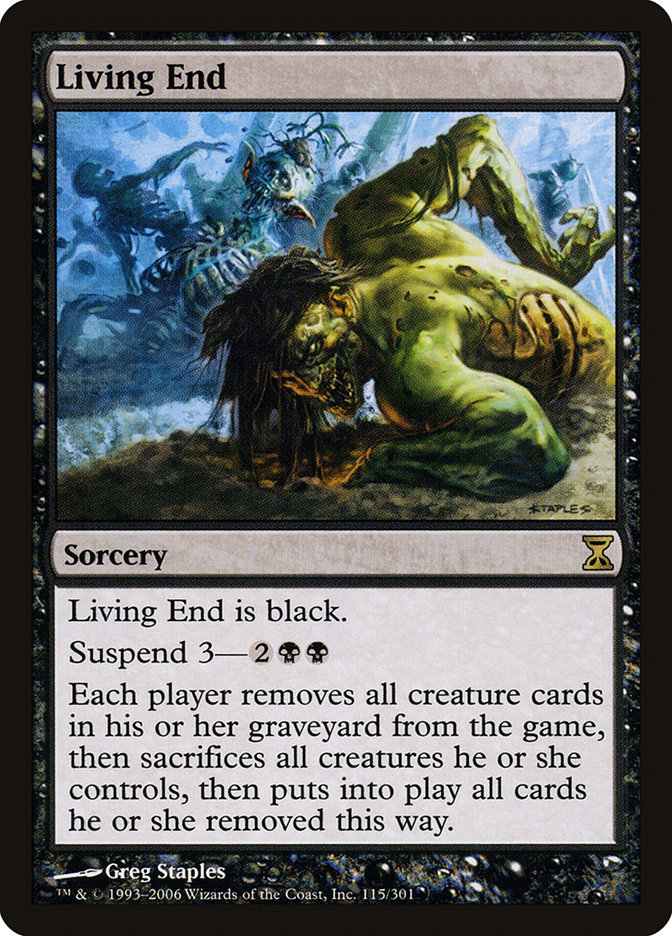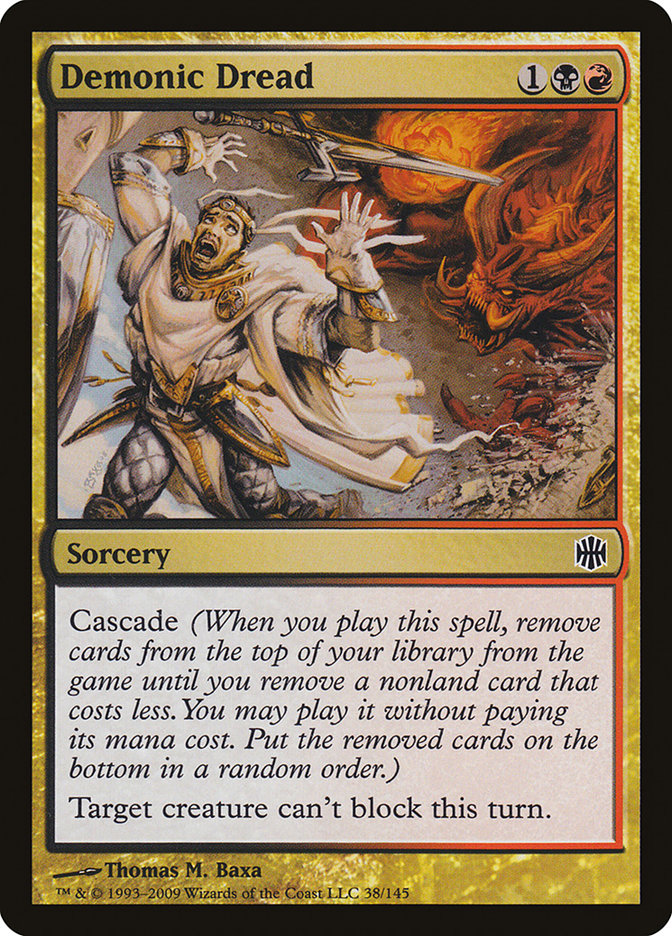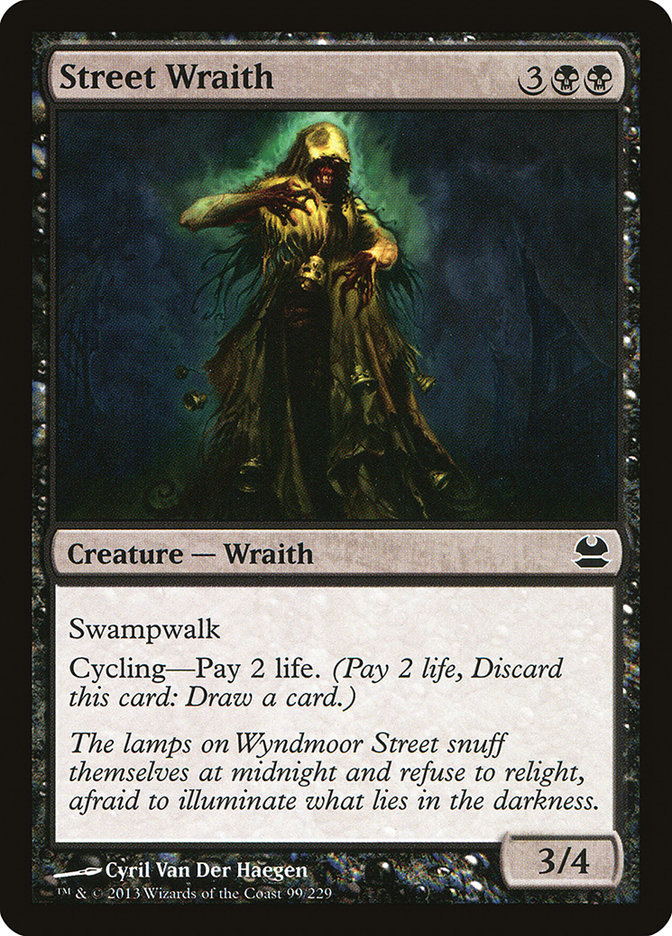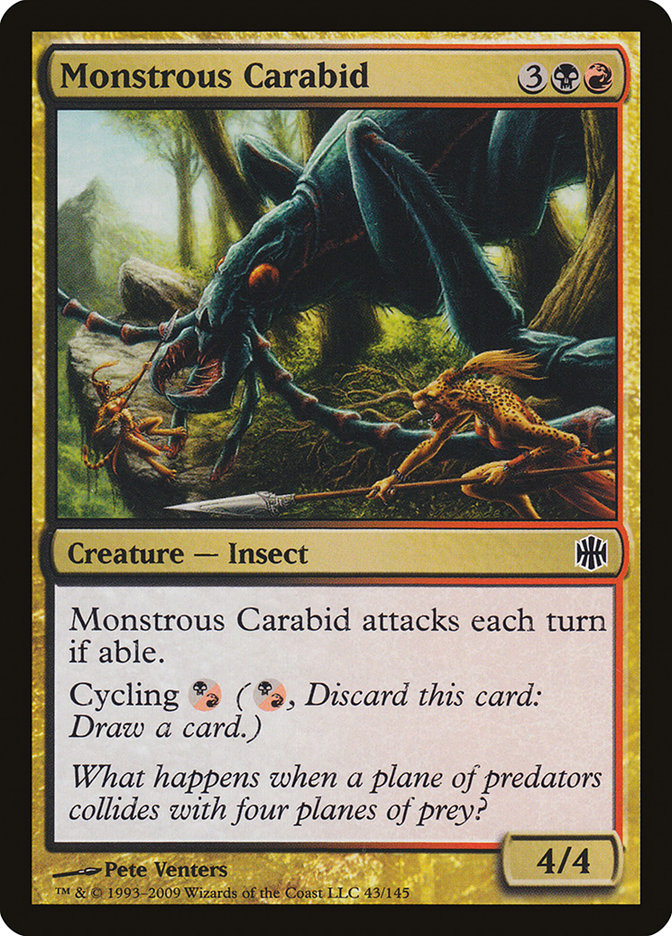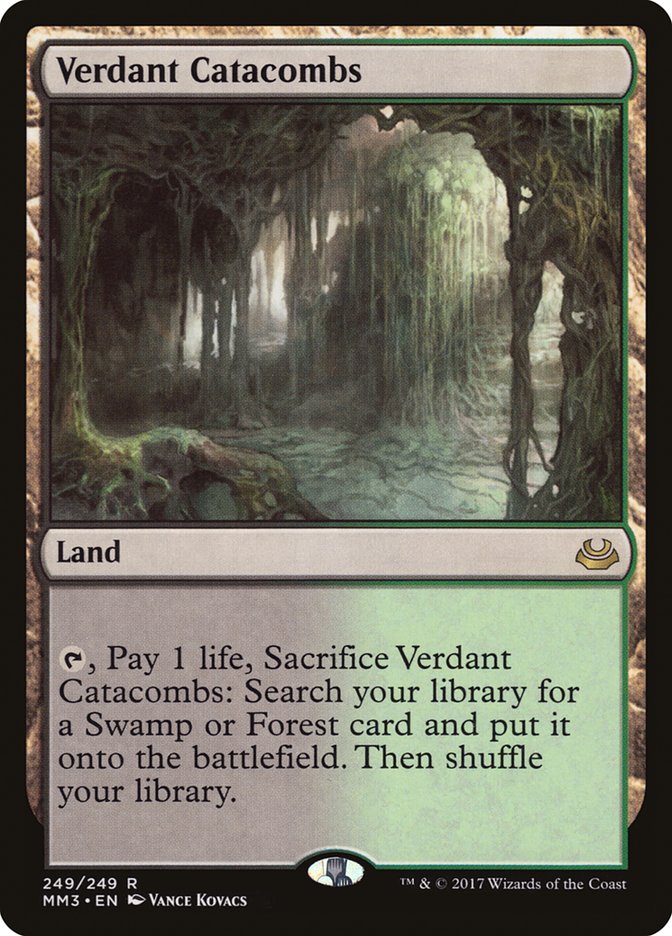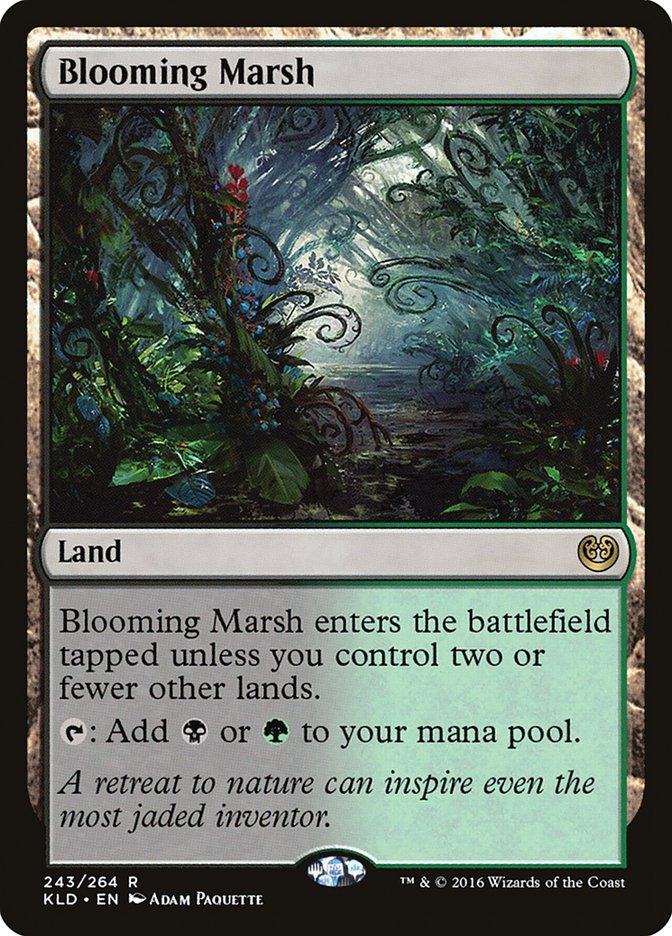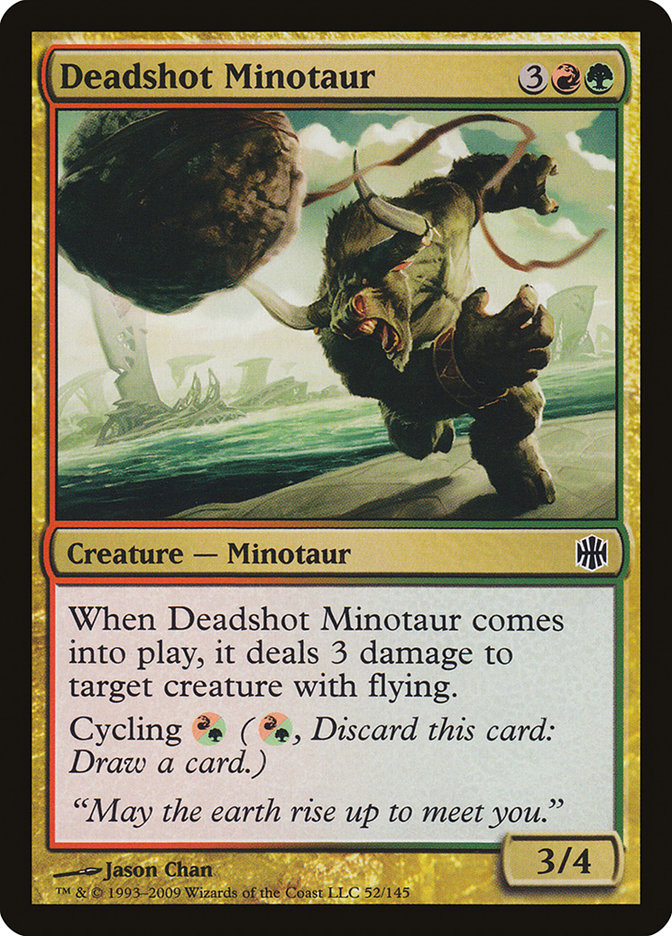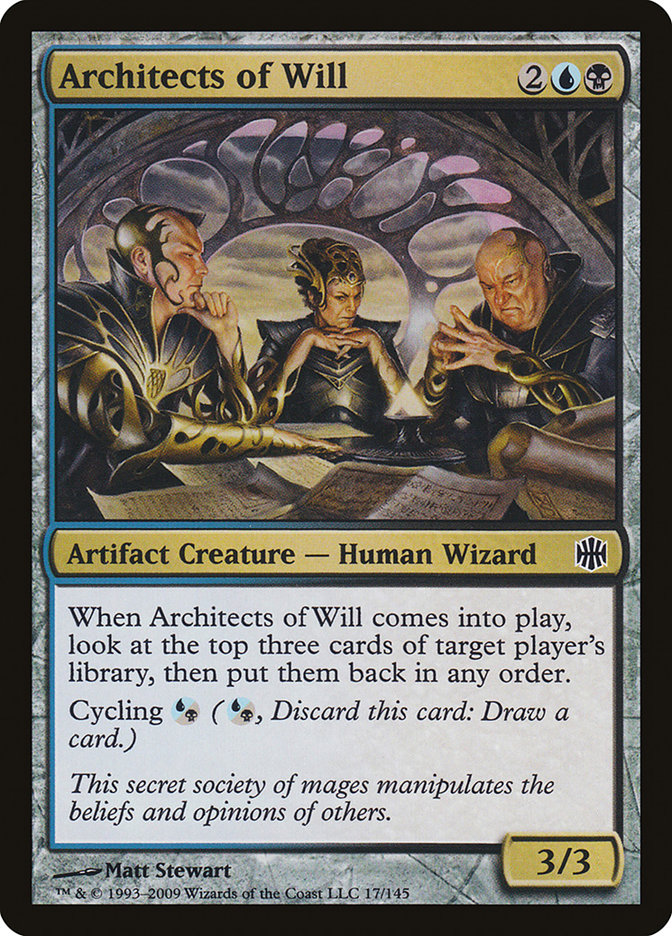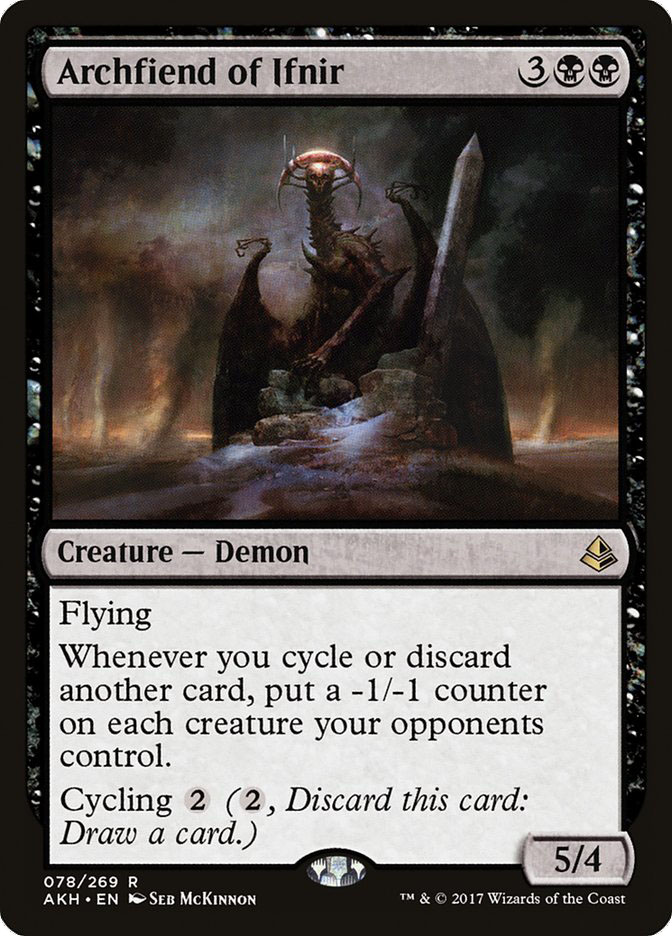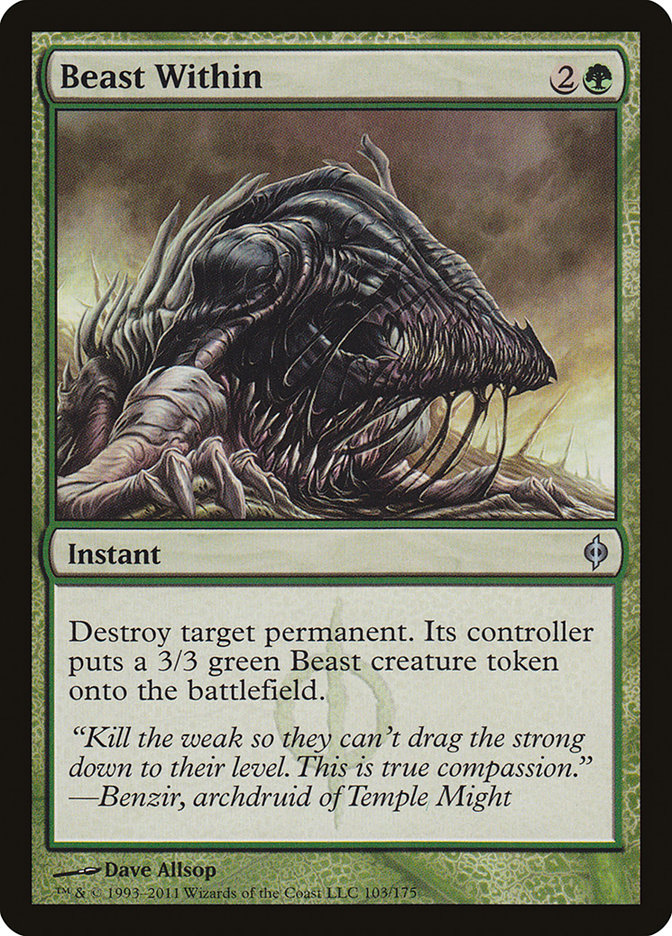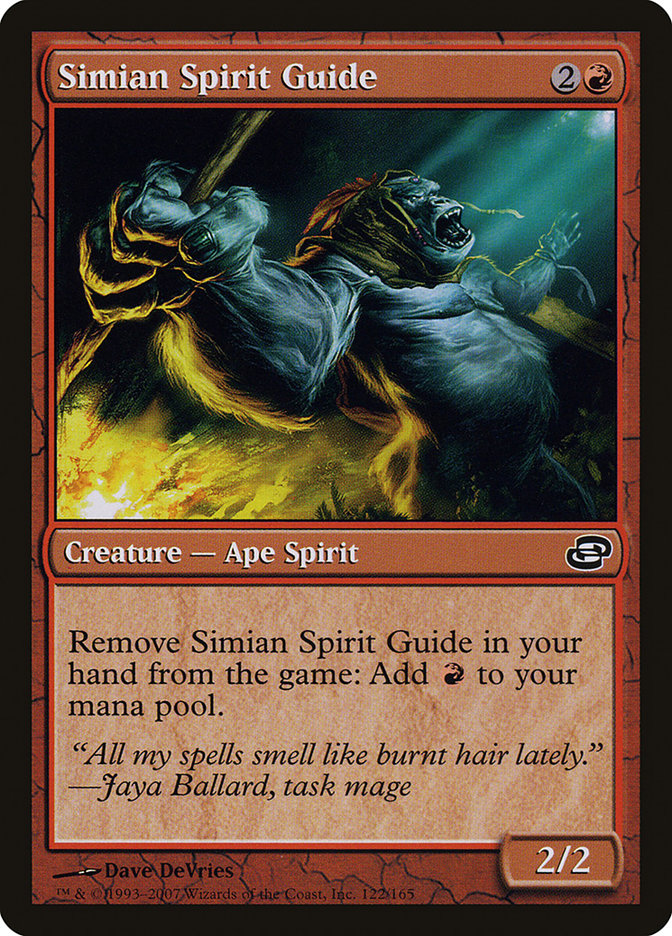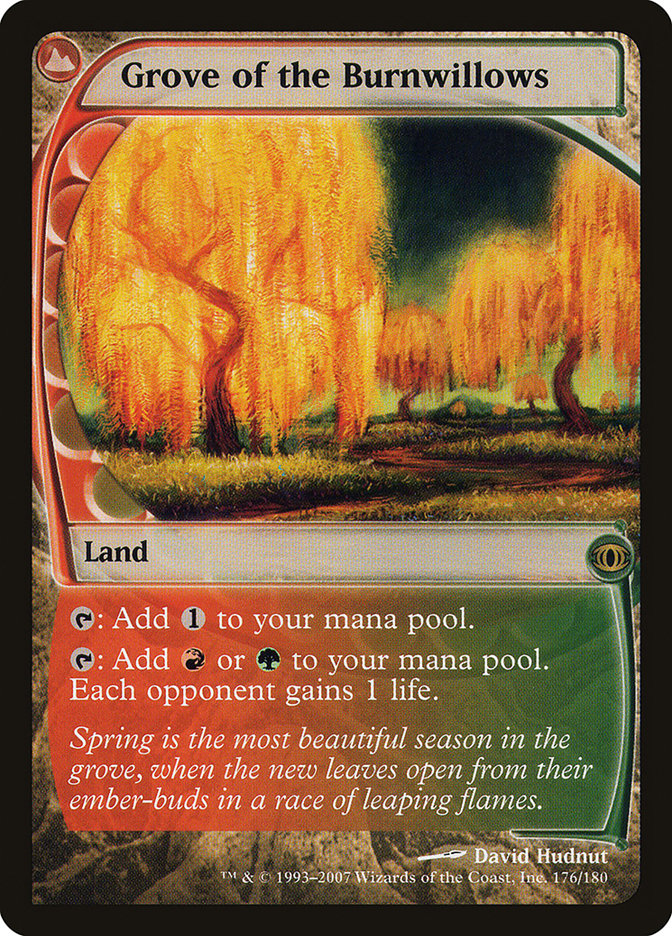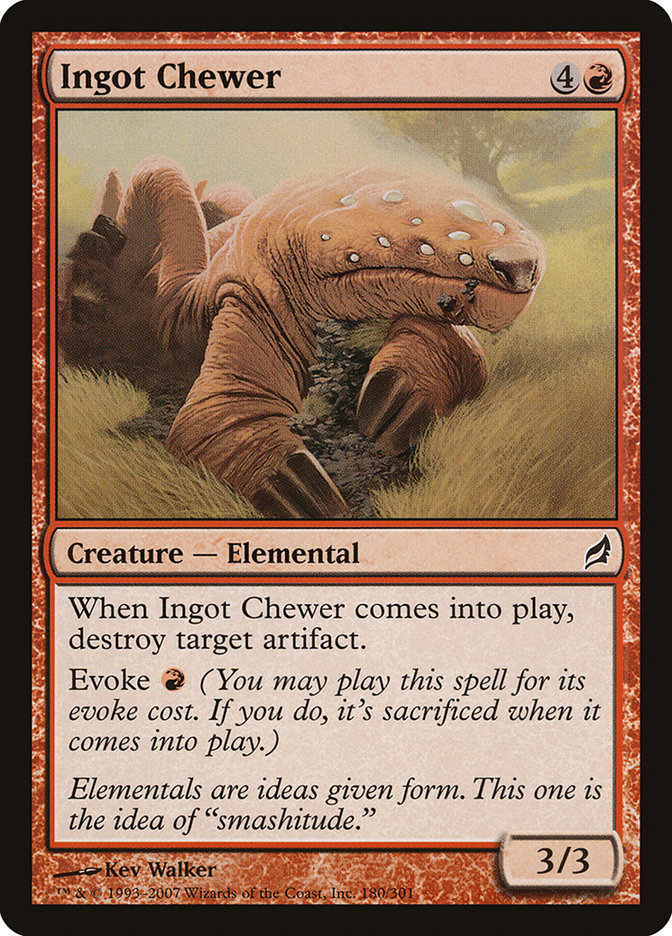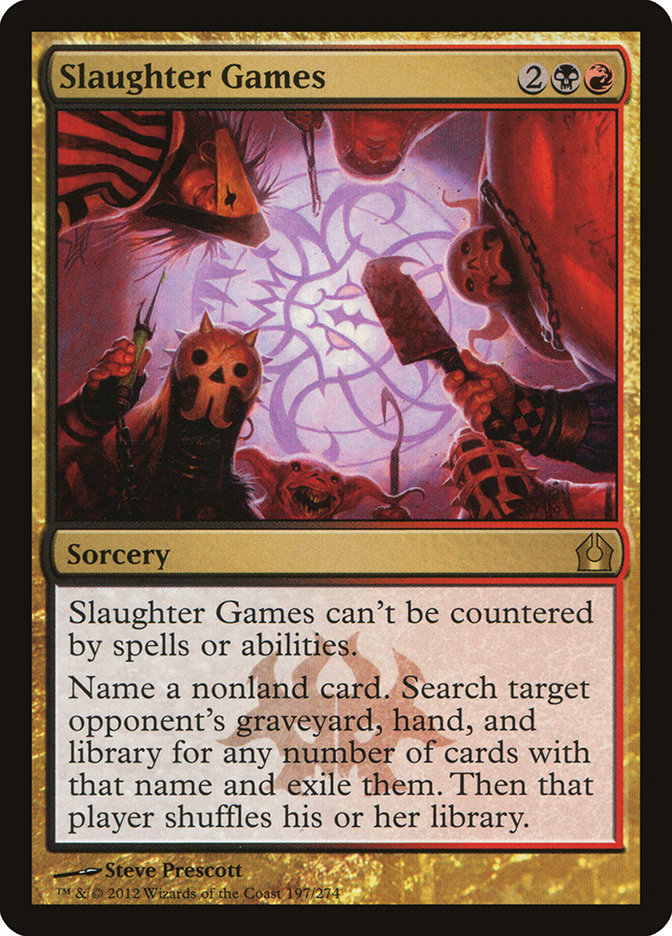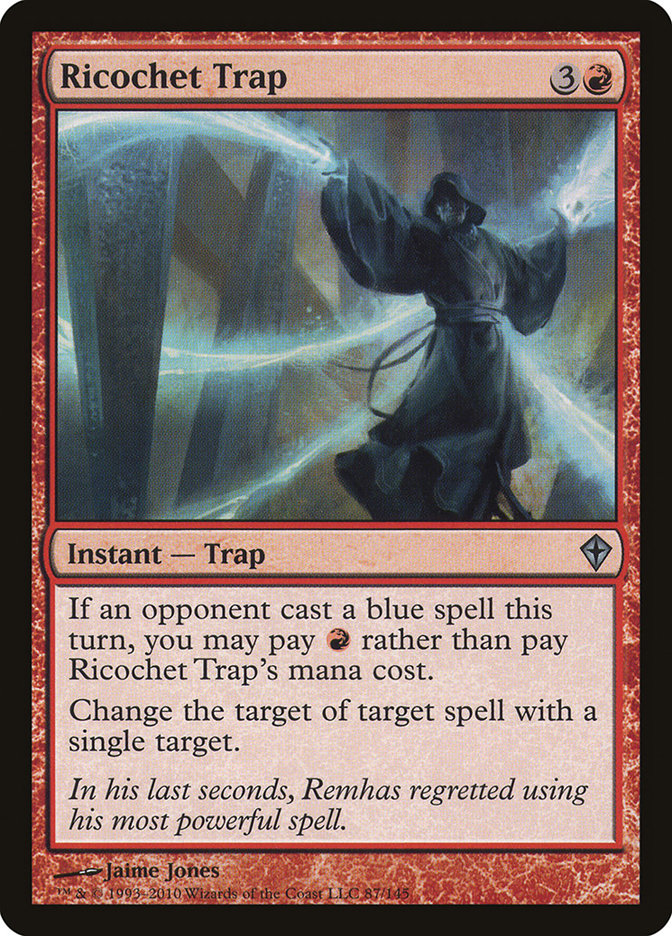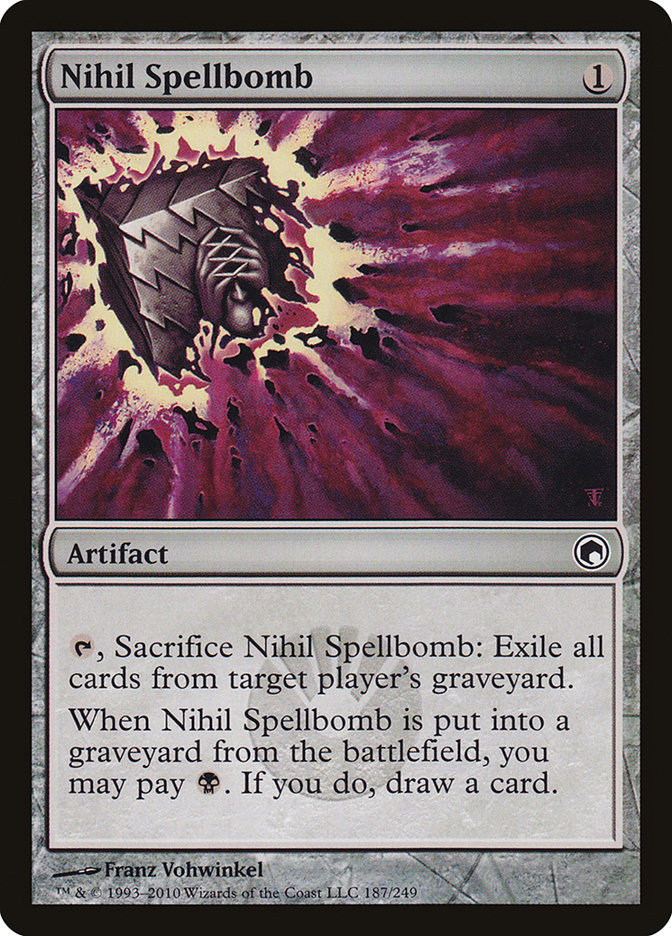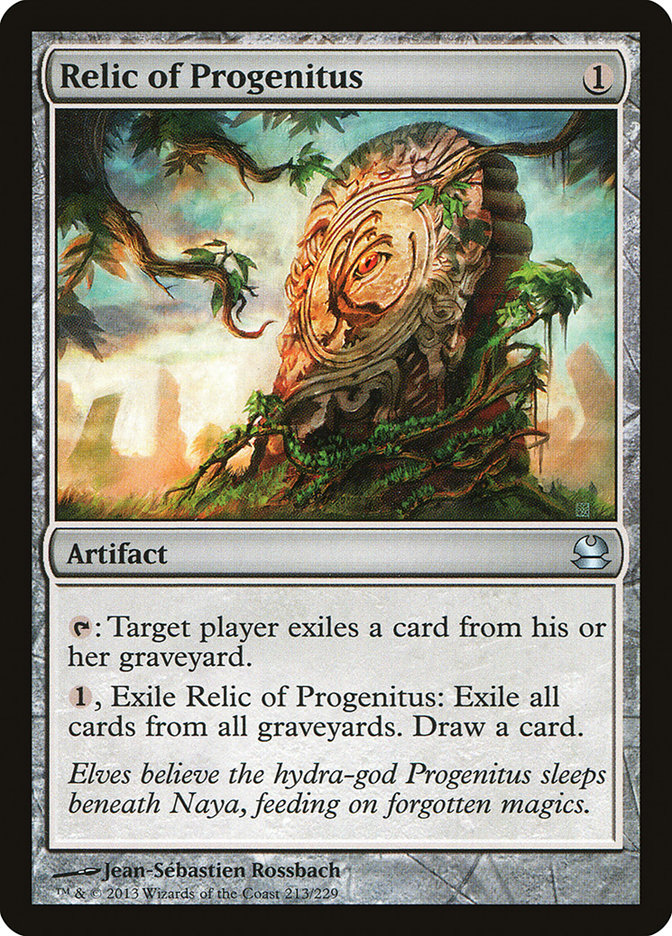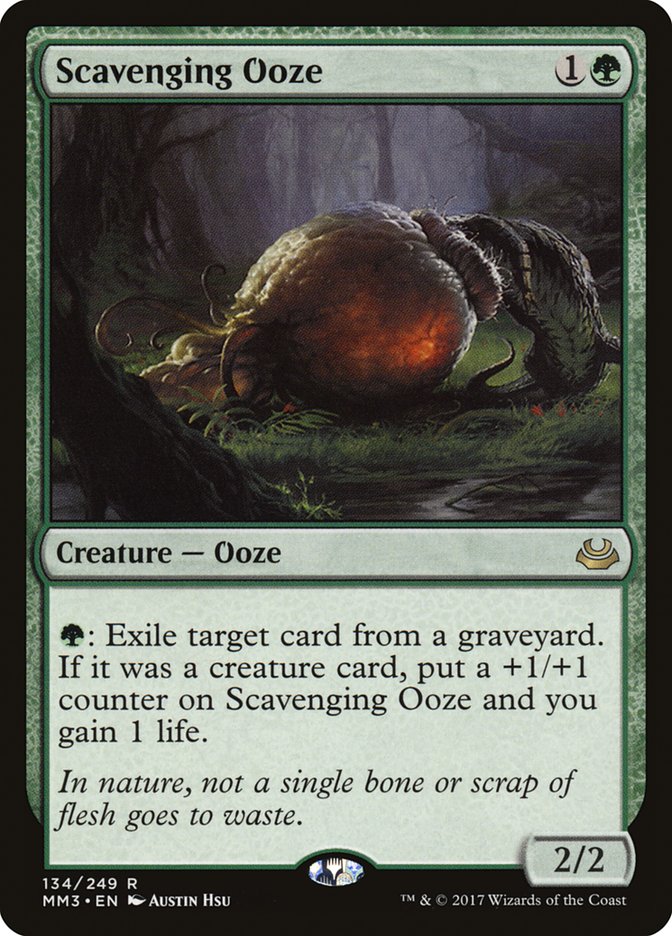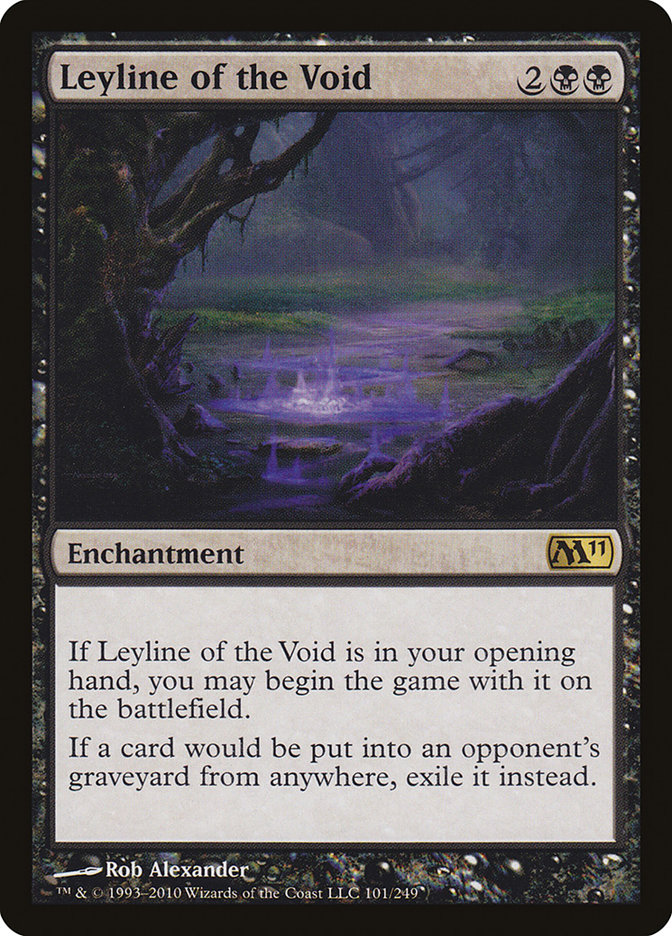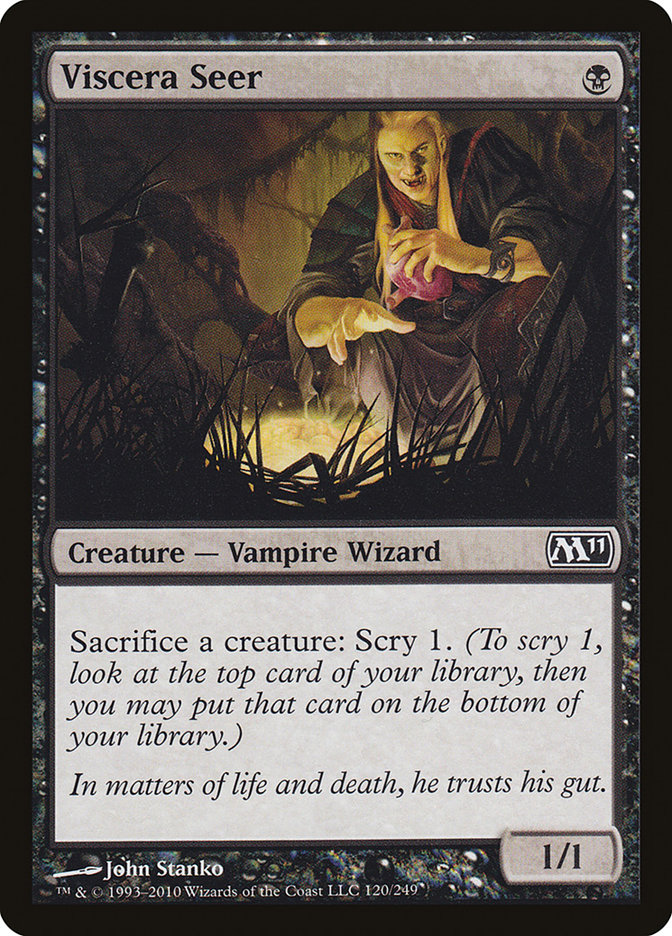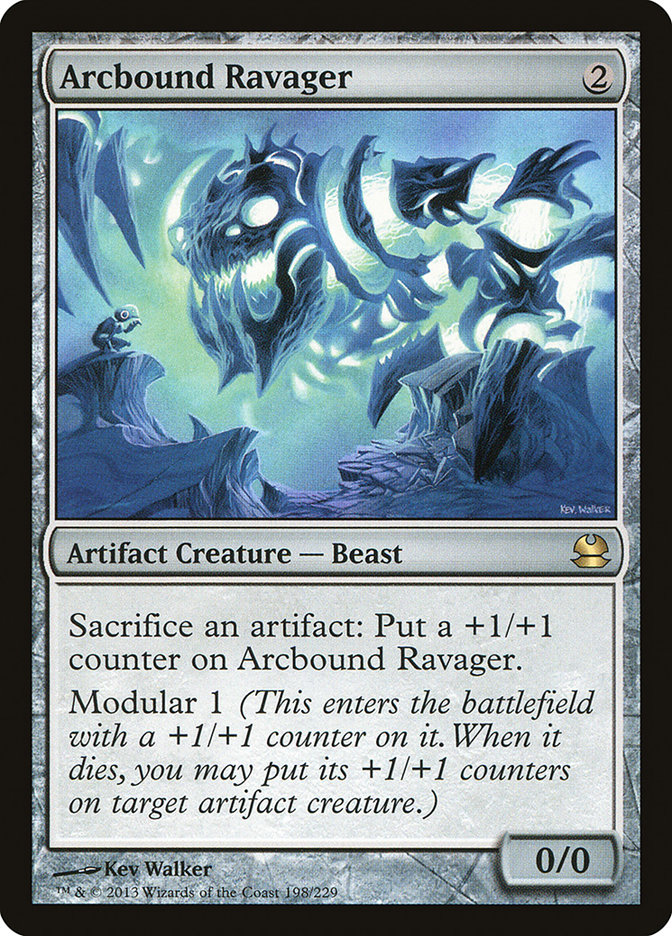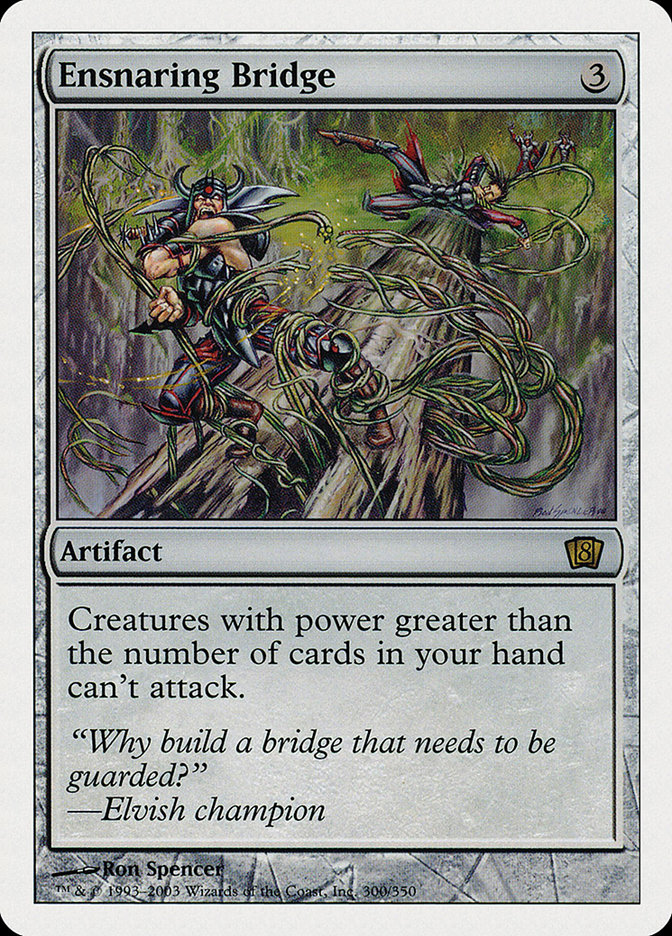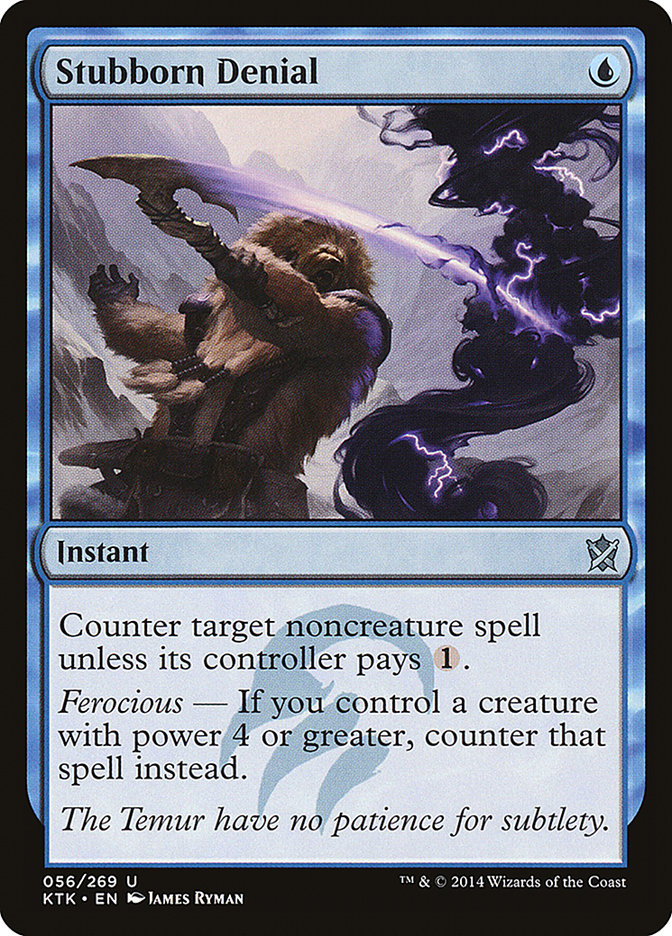Living End is really good right now.
Creatures (30)
- 4 Simian Spirit Guide
- 4 Street Wraith
- 4 Faerie Macabre
- 2 Fulminator Mage
- 4 Architects of Will
- 4 Monstrous Carabid
- 4 Desert Cerodon
- 4 Horror of the Broken Lands
Lands (18)
Spells (12)
Sideboard

I want to establish that I have no skin in this game. For a long time, I prided myself on posting all my videos even if the deck was bad… except the one time I couldn’t bring myself to play more matches with Living End because it sucked so much.
So, again, completely unbiased.
Living End is really, really good right now.
But Why Living End?
Jim Davis just spent the last two weeks telling you why you should be playing Dredge. Living End is the same thing: a hyper-linear graveyard strategy. Why play it over the deck the literal Metagame Gurus are promoting?
There is something I like to call the classic Dredge problem. With Dredge, you need to hit a ton of pieces over the course of a given game to have a good “draw.” You need the discard effect, the dredger, the next dredger, something to rebuy, the big payoff creature of Prized Amalgam.
Time for some rough math (estimated sample sizes, actual hypergeometric math rounded a bit).
You have a bunch of discard effects, you are 80% to have one in your opening hand. You are 85% to have a dredger. Given the first dredger, you are 90%-ish to hit the second, plus some percent you are okay rediscarding the first dredger. You are 80% to hit a starter creature. Then you want a Prized Amalgam to really get going (70%).
I’m going to incorrectly overestimate and assume that these are all independent for math ease. There is a about a 1/3 chance all of this comes together for your good hand just to make four to five power of dredge creatures. There’s a range of okay configurations with Life from the Loam and Conflagrate to consider, but your deck’s nut draw is not consistent. You mostly do stuff and hope Conflagrate and some slow creatures you can’t remove are good enough. Oh, yeah, and 30-35% of your seven-card hands are mulligans.
Living End doesn’t fail like that. There’s a single point of failure: did I hit a cascade effect? A good estimate is ignoring the cycling spells as part of your deck, which puts you over 90% to hit a cascade effect in a normal game. You are around 70% to have multiples and crush that Inquisition of Kozilek. You also almost never mulligan because your cyclers are free mulligans in every hand.
Living End is much better at pushing back against opposing clocks than Dredge. In the games you hit a million things, Dredge is great, but your Conflagrate only goes so far against Death’s Shadow and Gurmag Angler. 5/5, Zombie, and Fish are powerful offensive abilities.
Living End stops that cold. Everything dies, and it’s time for 4/4s. Etched Champion? Doesn’t have protection from getting sacrificed. Thanks and try again.
Here is what a Dredge hand looks like against graveyard hate:
Here is a Living End hand against graveyard hate:
Your cards still do some awesome things. A long time ago, my team wrote about how G/W Hexproof sideboarding in Rest in Peace against Living End made the unwinnable winnable. You still win games against Leyline of the Void because their creatures all die once; then you cast some 4/4s. Or sometimes they just get Swampwalked or 10/7 Horrored out because they wanted to spend all their life in advance.
Jim talked about post-sideboard games with Dredge being slower because your opponent is down cards toplay graveyard hate. Dredge “exploits” this by playing 3/3s that get brick-walled. Living End uses the extra time to play creatures that compete with the expected threats of the metagame. It’s just a bigger, more resilient deck.
But Why Male Models Living End?
Living End is also a spell-based combo deck; in addition to competing with graveyard decks, it has to make the case it is better than the more traditional combo decks.
It honestly is.
A sticking point for old Living End was that often it would attack once and then pass with the opponent still alive. With multiple creatures that represent six or more power for one mana, that just doesn’t happen anymore. You aren’t quite as fast as unopposed Storm, but Ad Nauseam is in a similar goldfish boat.
The good thing for you is that all the faster combo decks are also graveyard-centric. They aren’t getting any anti-hate positioning on you and are probably worse as their Desperate Rituals and Worldspine Wurms can’t be cast and attack. If the hate cards you were battling were more specific, this wouldn’t be a big plus, but this is graveyard hate. Everyone is going to have something, so every round your post-sideboard games are going to be better off.
What you lose in speed is also made up for in interaction. While a deck like Storm can Grapshot down creatures and Remand spells, those aren’t the best-positioned effects. Land destruction, graveyard hate, and sweepers, on the other hand, are really good against the field. Your interaction is relevant, theirs less so.
There’s also Death’s Shadow. No way around it, that is the deck you need to be ready to face, and honestly most of the other combo decks just aren’t.
What makes Living End unique here is cycling and redundancy. Let’s compare it to Ad Nauseam for a second. Most of the time, if your opponent Thoughtseizes your Ad Nauseam, you are going to have a bad time, as there are now only three copies left in your deck. Spoils of the Vault does some work, but less in the face of a Death’s Shadow-sized clock.
Remember that 70% to have a second cascade effect number I quoted earlier? That’s what I’m talking about with Living End. You even get bonus points due to how cycling lines up against discard. The old joke is they can’t Thoughtseize the top of your deck, and if you pace your cycling spells appropriately, there’s a lot of the top of your deck to mitigate the second discard spell. Ad Nauseam can pull similar stunts with Serum Visions, but often the second discard spell pulls the other key piece of the combo and things start to fall apart.
There are worlds where the speed or interaction other combo decks present is better than Living End’s offerings. The Death’s Shadow, Thoughtseize, Devoted Druid world is not one of them.
Core Cards
Duh. The first three are in no matter what.
In theory, the fourth Demonic Dread is not a card you are married to. In practice you just play eight and probably consider a different deck if things are so bad for Demonic Dread, as that implies sweeping them with Living End sucks and they are all playing slightly faster combo.
You need a critical mass of cheap cyclers to make the deck work. Horror of the Broken Lands is the absolute best one, as it attacks for six to ten. Street Wraith is the next, as it is free. Monstrous Carabid is next as it is a solid body and flexible. Desert Cerdon comes after due to that big number six in the bottom right hand corner. Don’t listen to the people not playing it; the card is great.
The mana sources aren’t locked in, but you need at least eighteen of them. Most likely the real minimum is nineteen or twenty, and most lists play 21 or 22 ways to make mana.
That is 45 slots you absolutely need, possibly closer to 46 or 47 with the mana flexibilty.
What else do we want to do with our deck?
Actual Choices
Another three to five slots have to be cycling creatures, but it isn’t super-clear what’s next.
It isn’t anything that costs two to cycle. The only good part of Archfiend of Ifnir is that it beats people up when hard-cast. That’s not my plan. Also, nice Archfiend when one of the decks you want it against most plays Vizier of Remedies.
That leaves Architects of Will and Deadshot Minotaur. I will admit I have not played with Architects. I can see a split being fine. But shifting to all Architects does some funny stuff to your mana. Any green, red, or G/R source suddenly misses half of your cyclers that cost mana to use, meaning you have to shift your mana away from the best configuration for casting Violent Outburst. You start needing to play more fetches over Grove of the Burnwillows or Copperline Gorge, which is a real cost. Architects of Will being an artifact is also a liability against Tarmogoyf. It is also just another three-power creature.
Deadshot Minotaur isn’t exciting, and it gets trimmed in sideboarding, but it always does the job. I’m playing four, but I wouldn’t be shocked if I play fewer after Hour of Devastation brings more cycling creatures to the table.
Note that it also isn’t out of the question to just play all the Deadshot Minotaurs and some Architects of Will. More on that later.
I’m unsure what to think about Beast Within. I love having access to the effect. It makes sideboard building and configuration so much easier to know you just have a catch-all to their nonsense that also enables Demonic Dread.
At the same time, it kinda sucks. It really isn’t a good card when you are trying to dump into a giant graveyard. It isn’t really a good card when you are trying to buy time.
Now that we are talking about non-cycling cards, it’s a good time to talk about what happens to your hands over a game with so many cyclers in your deck. I did math earlier about cyclers where I removed them from the deck, and that is what tends to happen over a game where you don’t start casting “big bugs.” You dead-end at the cards without cycling, often leaving you a bit flooded and leaning on those cards to carry weight. Dead-ending on Beast Within when your opponent doesn’t have a hate card is not fun, though it’s great against their Leyline of the Void. Keep this in mind as you choose all of your cards: do I want to be drawing to this card as I dig for whatever high-impact thing they present?
I think the first point means I want to play it and fudge the numbers a bit, but I’m not married to the concept.
Ah, how times have changed. Turn 2 Fulminator Mage used to be all the rage. Then the midrange decks stopped playing four-drops and started playing one-drops that kill you. And they also started straight-up beating the crap out of big mana decks. Casting Fulminator Mage mostly Time Walks yourself to kinda partly Time Walk them these days, which isn’t my cup of tea. I still had Fulminator Mages in my list before writing this article, but I’m not sure I will when I’m done.
Almost directly tied into this decision is Simian Spirit Guide. Casting Living End a turn early doesn’t really get you anywhere. Cycling a bonus creature isn’t worth throwing a card away. You only wanted the extra mana to cast Fulminator Mage on turn 2 and crush hopes and dreams. Occasionally you get to pay for a Stubborn Denial, but just as often their thing is a 4/4 and you get hard countered. I was already shaving these before I cut down on Fulminator Mages, and even if I played all four Mages I would look at three Spirit Guides.
Faerie Macabre is the truth.
It counters Surgical Extraction targeting Living End. It picks off cycled Street Wraiths prior to Living End. It stops Arcbound Ravager and Viscera Seer from ruining your game. It’s maindeckable graveyard hate in a heavy-graveyard metagame.
Faerie Macabre also is a graveyard hate card you want to cycle into, letting you cut Leyline of the Void, which you never want to draw. Please don’t play that card; it makes your deck really bad.
Okay, fine, I play one Leyline in my list. Can’t mise if you don’t try.
Faerie Macabre does die to Deadshot Minotaur, but a 2/2 flier isn’t a real threat anyway. If you have multiple Deadshots and multiple Faeries, you can target the same one with both and keep the extra fliers.
Taking damage sucks, especially when you are often trying to survive until the best point to Living End and spend life on Street Wraith. I don’t know if four Verdant Catacombs or a mix with Bloodstained Mire and a basic Mountain is right, but more than four or five fetchlands is not good.
Grove of the Burnwillows is just better than Copperline Gorge. There’s the anti-Death’s Shadow lifegain, but it’s also a land that is untapped on turn 5 without costing life. Too many fastlands will hamper your backup plan of casting creatures.
Aside from not playing Leylines, I don’t do anything crazy with my sideboard. The obvious good cards are good. I’m coming around to Lost Legacy over Slaughter Games with fewer Simian Spirit Guides in the deck, more TitanShift than controlling Scapeshift, and not a ton of Krark-Clan Ironworks, but that change is pretty marginal.
Putting this all together, I’m going to present two lists. The first is the one I left off on, and the second is the one I would try moving forward.
Creatures (28)
- 2 Simian Spirit Guide
- 4 Street Wraith
- 3 Faerie Macabre
- 3 Fulminator Mage
- 4 Monstrous Carabid
- 4 Deadshot Minotaur
- 4 Desert Cerodon
- 4 Horror of the Broken Lands
Lands (19)
Spells (13)

Creatures (27)
- 4 Street Wraith
- 3 Faerie Macabre
- 4 Architects of Will
- 4 Monstrous Carabid
- 4 Deadshot Minotaur
- 4 Desert Cerodon
- 4 Horror of the Broken Lands
Lands (19)
Spells (14)

Sideboarding
The sideboard cards here aren’t difficult to figure out. Cascade decks don’t have access to the cheap, flexible sideboard cards other decks do. They just have blunt objects. Ingot Chewer kills artifacts, including Chalice of the Void. Graveyard hate beats graveyard decks. Ricochet Trap handles blue mages. Lost Legacy hits the other combo decks in the format. Shriekmaw picks off non-Death’s Shadow creatures against Devoted Druid decks or tribal aggro. Brindle Boar gains life against Burn, and Leyline of Sanctity fights discard and burn.
You are rarely sideboarding more than a handful of cards, so taking cards out is similarly easy. The only core card that comes out is the first or second copy of Demonic Dread if they have no targets for it, but you can still target your own creatures or Beast tokens, so removing them all is bad. Beyond that, all of the non-core cards are negotiable. That includes trimming Simian Spirit Guides in attrition matchups; taking out Faerie Macabre if they don’t have Street Wraith, sacrifice outlets, or Surgical Extractions to protect against; or taking out a couple of your worst cyclers.
Seriously, don’t work too hard here. I found that while your sideboard cards do directly win games, the ones you are unsure of are pretty low value. When in doubt, just jam on them and don’t sweat the small stuff.
Fighting the Hate
Against any one shot graveyard sweeper, you have three options: sandbag cyclers and kill it, force it to activate with a small first Living End and load up a second, or get enough mana to cycle stuff in response to Living End after they use it. The cycle in response is good if you have free discards like Street Wraith. If they have too many things that die to the first Living End in the two-shot plan, you are going to have to go with hardcasting the second wave of threats, as they will get back everything you killed the first time around.
Relic of Progenitus is super-annoying. It adds a “sandbag cyclers and fire them all at the right time” aspect to the above plans. Honestly, against Relic, your goal might be to try to play fair Magic.
Against Scavenging Ooze you can either Living End it away, cycle everything, and Living End again or wait, cycle everything at once, and choke them on mana to exile enough to matter. If you have to play fair against it, remember Demonic Dread has game text to get through a larger Ooze.
Against hard-stop graveyard hate, you become a weird control deck. Against Leyline of the Void, if you don’t have Faerie Macabre, you need to milk as much as possible from your first Living End, but against Rest in Peace every Living End is a full-on Wrath of God.
Keeping hands with a Living End and no Faerie Macabre is a liability against Thoughtseize / Surgical Extraction decks. It’s possible you want to sideboard down to two copies to avoid this.
Against Death’s Shadow, remember they can cycle Street Wraiths to get back off Living End. Avoid fetching Swamps if possible and watch your life total for when you have to go off to survive Wraith damage.
The plan against sacrifice outlets is to Faerie Macabre or to Violent Outburst a massive set of creatures and make a great first attack that leaves you able to win the game.
Problems
Every Modern deck has critical flaws. I’m still unsure if I’ll be playing Living End at my next big event, and these are the main reasons.
Almost all of the anti-graveyard hate plans lean on Living End as a sweeper. Chalice does everything the graveyard hate does and stops that. Winning games with a Chalice of the Void on the battlefield is near-impossible. Eldrazi Tron is the big issue here.
Ensnaring Bridge also shuts you down. It’s beatable, but Lantern Control isn’t. They are much better at finding redundant Bridges and Welding Jars than you are at finding answers, even with cycling to break up the lock. They also have Surgical Extraction and Inquisition of Kozilek, so in many games you are stuck hardcasting five-mana 4/4s.
The trend towards Stubborn Denial in Death’s Shadow has been rough. The matchup is still fine, but Jund Shadow felt like a bye, where Grixis Shadow is often close in games. You can’t Ricochet Trap in these matchups, as it’s too easy for their discard to break up your protected setup. You just have to fire a Living End and hope it works.
That all said, the single most likely reason I don’t play Living End at Grand Prix Las Vegas?
I really, really like casting Thoughtseize.


